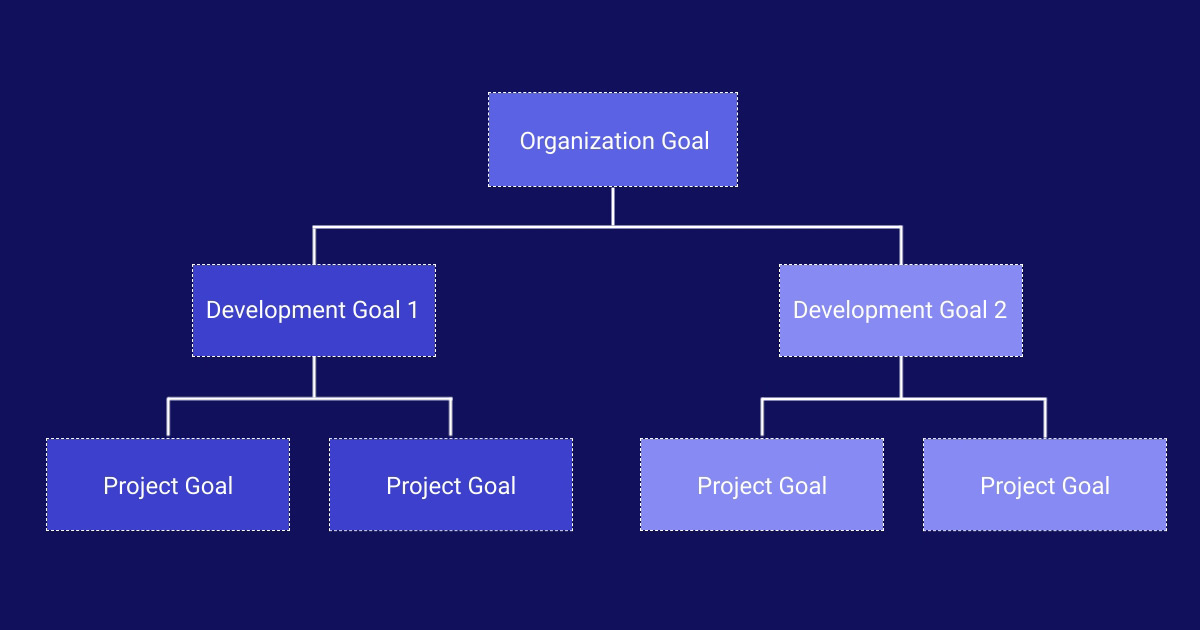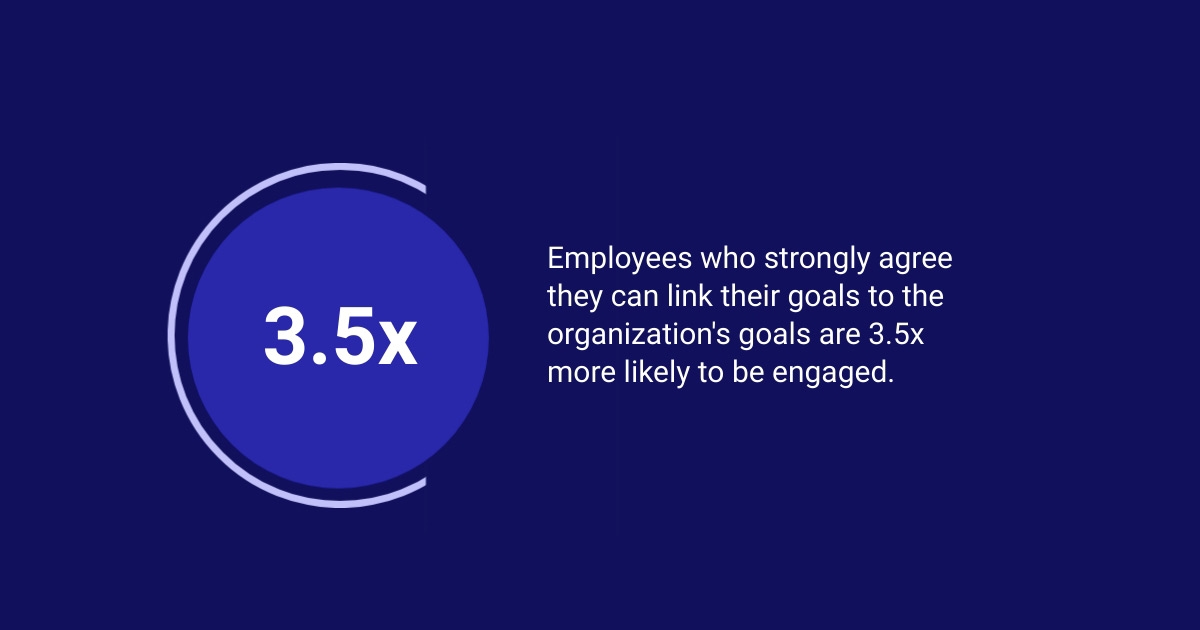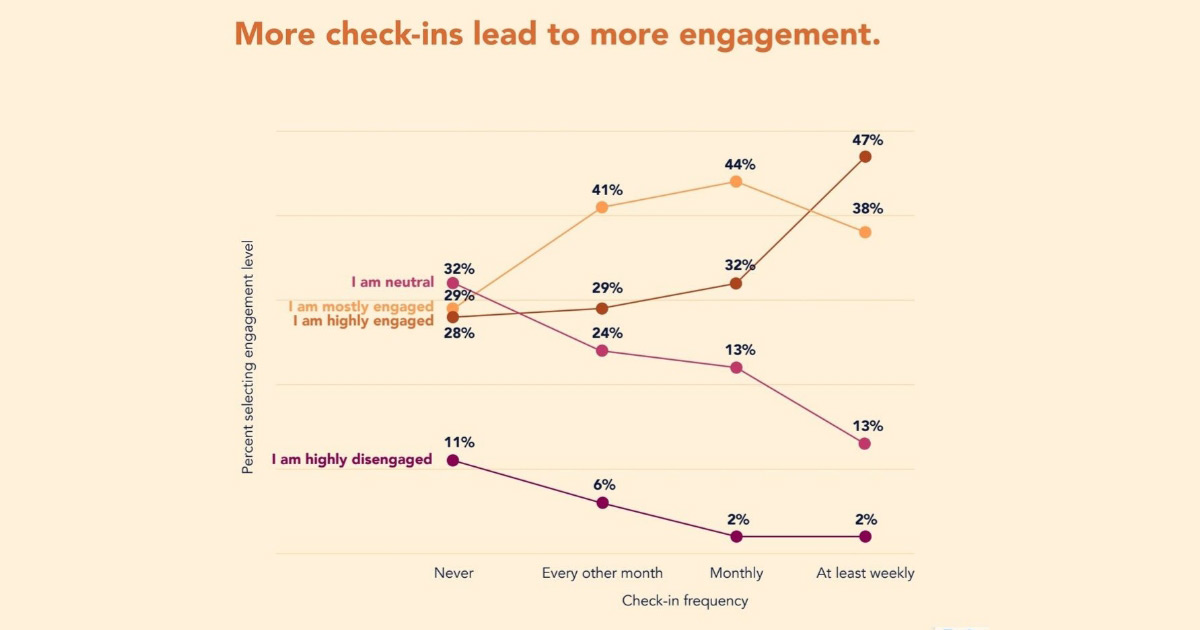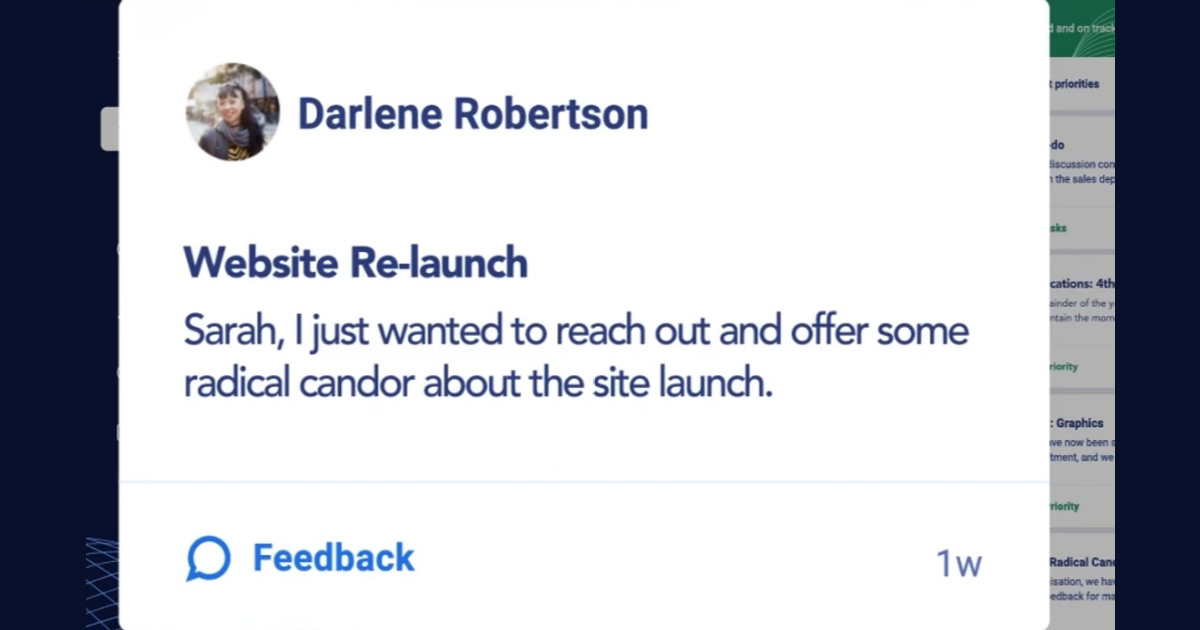Cascading Goals: A Strategy for Aligning Objectives Across Your Organization

Are you finding it challenging to align your team's efforts with your company's broader objectives? Cascading goals can revolutionize your approach, ensuring every team member understands their role in the bigger picture. How can this method transform your business strategy?
Cascading goals break down top-level objectives into actionable steps for each level of your organization. This method ensures clarity, accountability, and alignment from executives to frontline employees. Implementing cascading goals creates a unified direction that propels productivity and success.
Are you curious about the practical steps to implement cascading goals in your business? We'll delve into expert insights and real-world examples that showcase the power of this approach. Let’s explore how cascading goals can elevate your organizational performance.
Key takeaways
- Cascading goals connect individual work to overall organizational objectives.
- Specialty frameworks like SMART can help enhance goal alignment.
- Leadership, communication, and tracking are pivotal for goal implementation.

What are cascading goals?
Cascading goals are a structured strategy where organizational goals are broken down and distributed across different levels within a company. It starts with the top-tier objectives and flows down to the individual tasks that each employee works on.
Imagine a waterfall: At the top is your company's overall vision, and as the water cascades down, it touches every rock and plant. These are the goals at various levels of your organization, all contributing to the bigger picture.
Benefits of goal cascading
1. Having a unified vision
Cascading goals are more than just a management strategy; they are a transformative tool that unifies an organization under a shared vision.
When top-level objectives are distilled into specific, actionable tasks at every level, each team member clearly understands how their work contributes to the broader mission.
This alignment fosters a sense of purpose and motivation as employees see their contributions making a tangible impact on the company's success. A unified vision drives productivity and cultivates a cohesive company culture where everyone is working towards a common goal.
2. Enhanced accountability and performance
One of the most significant benefits of cascading goals is enhancing accountability in the workplace. By breaking down overarching objectives into measurable tasks, each team and individual knows precisely what is expected of them and how their performance will be evaluated.
This clarity reduces ambiguity and ensures everyone pulls in the same direction. It also enables managers to track and measure progress more effectively, identify bottlenecks, and provide timely feedback.
For more guidance on employee feedback, check out the white paper "9 Tips for Giving Feedback (Without the Stress)" today.
The result is a more agile and responsive organization that can adapt quickly to changes and continuously improve performance.
3. Empowerment through clarity and communication
Cascading goals also empower employees by promoting transparent communication and collaboration. When goals are clearly communicated and aligned across all levels, it opens up channels for dialogue and innovation.
Employees feel more valued and engaged when they understand how their roles fit into the bigger picture and when their ideas and contributions are recognized.
This empowerment leads to higher job satisfaction, lower turnover rates, and a more dynamic and innovative workplace. In essence, cascading goals create an environment where everyone is invested in the organization's success, driving individual and collective achievement.
5 Crucial elements for effective strategic goal cascading
1. Establish top-level strategic goals
Define clear objectives
Start by defining clear, achievable objectives at the top level. Top-level goals should be aligned with the company's mission, vision, and values and should be specific, measurable, achievable, relevant, and time-bound (SMART):
Specific: To successfully apply the SMART framework to cascading goals, you'll want to start at the top with robust and specific aims. A higher-level goal might be to increase annual revenue, but for your team, it becomes "Increase the Southeast region's monthly sales by 10%."
Measurable: The central tenet of SMART goals is measurability, which provides a tangible benchmark for success. Establishing clear, measurable goals is crucial. Everyone at the team and individual level should know exactly what they're aiming for.
If a sales representative's goal is to "increase sales," this isn't clear enough. But if you tell them to "increase sales of product X by 15% by Q3," they have a precise target. This ensures each team member knows exactly what they're working toward.
Achievable: To be successful, goals must be realistic and attainable. While it's important to set challenging goals to inspire effort, setting unattainable goals can demotivate your team. Ensure the resources, skills, and time needed to achieve the goals are available.
For instance, aiming to "increase customer satisfaction scores by 5% within the next six months" is achievable if you provide adequate training and resources to your customer service team.
Relevant: Goals should be relevant to the company's overall objectives. They must matter to the individual or team, align with other goals, and apply to the broader business objectives.
For example, "Enhance the user experience on our website to reduce bounce rates by 20% within six months" aligns with a broader goal of increasing online engagement and sales.
Time-bound: Every goal needs a target date, so you have a deadline to focus on and something to work toward. This part of the SMART goal criteria helps to prevent everyday tasks from taking priority over your longer-term goals.
For example, "Increase Q2 online sales by 25% by the end of June" sets a clear time frame for the goal.
The benefits of having specific, measurable, achievable, relevant, and time-bound goals are numerous:
- Clarity in expectations
- Easier tracking of progress
- Motivation boosts when targets are met
- Better alignment with overall business objectives
By breaking down your primary objectives into smaller, quantifiable tasks that meet the SMART criteria, everyone on your team knows what's expected, can measure their contribution, and understands the significance of their work in the larger company context.
Engage leadership in the goal-setting process
For leaders, the primary focus must be creating alignment that resonates throughout the organization. Effective communication of overarching goals and providing the necessary support for managers and employees to fulfill their roles are essential. Establishing clear expectations clarifies what everyone is working towards and why it matters.
Imagine a company aiming to break into a new market. Leadership must set the overarching goal and empower managers to develop team-specific targets aligning with this objective.
For example, the product development team might tailor features to the new demographic, while the sales team focuses on building relationships with key customers in the new market.
2. Break down goals on every level
To ensure that every member of your organization is working towards common objectives, it's essential to implement cascading goals effectively. This means translating company objectives into department, team, and individual goals and fostering clarity and ownership at each step.
Departmental and team goals
Departmental and team goals are the specific targets set for various organizational units. Communication is paramount to achieving these goals effectively. Each department and team must understand its objectives and see how they align with and support those of other teams and departments.
Imagine your company as a finely-tuned relay race, where each department represents a runner. If one runner slows down, the entire team's performance is compromised. However, the team achieves exceptional results when all runners are in sync.
This is the essence of company-wide synergy – one team's progress directly benefits another, creating a harmonious and efficient workflow.
To facilitate this synergy, leadership must cascade goals down the organizational hierarchy in an understandable and actionable manner at every level. Think of it as a detailed map that outlines the starting point, the destination, and the clear checkpoints along the way.
Organizations can foster a culture of collaboration and shared success by ensuring that every department and team understands their role in the larger picture. This approach enhances individual performance and drives the entire organization towards its strategic objectives.
Individual employee goals
Individual employee goals serve as foundational elements driving organizational success via cascading strategies. They translate lofty corporate visions into tangible actions executed daily at grassroots levels, ensuring seamless alignment throughout hierarchies and ultimately leading to unified organizational achievements.
This alignment creates a sense of purpose among employees, making them feel like integral parts of a larger mission. For instance, if your company aims to increase market share by 15% in the next fiscal year, an individual goal for a sales representative might be "Increase client acquisition by 10% within Q1.”
When everyone's daily tasks tie back to the company's vision, your teams need help understanding the '”what” and the “why.”
You can create greater alignment by empowering employees to set their own goals that contribute to company-wide goals and initiatives. This type of employee-driven alignment is especially important in increasing trust between managers and their direct reports.

Research shows that alignment between the employee and the organization improves overall productivity and engagement. According to "Obsolete Annual Reviews: Gallup's AdviceOuvre dans un nouvel onglet", organizations see 5-10% productivity gains when employees are clear on what is expected of them.
This step is often overlooked, though, as Gallup reports that “only 12% of employees strongly agree that their manager helps them set work priorities.”
3. Continuous performance management
Continuous performance management (CPM) ensures that your cascading goals remain relevant and effective throughout the year.
Unlike traditional annual reviews, CPM involves ongoing feedback, regular check-ins, and real-time adjustments to keep everyone aligned with organizational objectives.
The role of regular check-ins and feedback
Frequent check-ins keep goals relevant and ensure strategic alignment with company-wide goals. These check-ins are not just formal reviews; they can be casual conversations or quick messages using performance management software such as Conversations® from Workhuman.
Consider using a tool that helps you with feedback, such as Workhuman’s ConversationsⓇ solution.
Regular check-ins between managers and employees are crucial for maintaining momentum toward achieving these individualized targets. These meetings offer opportunities for effective feedback loops where adjustments can be made based on real-time challenges or shifting priorities.
For example, if an employee's task is to increase social media engagement by 20% over six months, but analytics show only a 5% increase after three months, it's time for a conversation.
During this discussion, both parties can explore what's working and adjust strategies accordingly – perhaps reallocating resources or tweaking content approaches.
Frequent check-ins also lead to more engagement, with 47% of highly engaged employees saying they check in with their managers at least weekly.

Learn more about the importance of transparency and frequent check-ins in this white paper, "Performance in the Future of Work."
These touchpoints help keep everyone aligned while fostering an environment where continuous improvement thrives—a key component in successfully implementing cascading goals across all levels of your organization.
Utilizing performance management software
Performance management software can streamline goal tracking and feedback. You can see your progress, set reminders, and receive timely coaching. Organizations that use such software have seen a 30% reduction in turnover.
This software gets you organized by letting you record wins and challenges and set new targets effectively. It's like having a coach who's always there, reminding you of the game plan.
Tools can also be used as real-time feedback mechanisms by fostering immediate communication about performance issues or achievements. Think of it as having instant replay during a sports game – it allows players (employees) to see what they did right or wrong immediately after the action occurs.

This immediacy helps maintain momentum toward achieving cascading goals while maintaining morale through recognition of efforts.
Empowerment through recognition
Recognition can reinforce positive behaviors by aligning them with the organization’s mission and values.
Research from our report, “The Power of Recognition in a Recession,” found that a peer-to-peer employee recognition program can encourage everyone to reward peers, managers, and direct reports for demonstrating actions aligned with the organization’s mission and values.
Download report
This alignment reinforces the positive behaviors associated with meeting or exceeding set objectives, as employees are recognized for actions that contribute to the organization’s goals.
4. Resource allocation and support
Proper resource allocation and support are fundamental to achieving cascading goals. Your team needs the right tools and training to ensure each member can contribute effectively.
Equipping teams with the right tools
Tools are the lifeline of your team's productivity. When equipped with the right software and technology, tasks related to goals become manageable.
For example, project management platforms like ClickUp provide a central place for monitoring cascading goals and resources. You can assign tasks, set deadlines, and track real-time progress. This approach helps prevent resource misallocation that could derail your goals.
Training for goal achievement
Training plays a critical role in cascading goals, especially when introducing new tools or concepts. It's not enough to provide a team with new software and expect flawless usage. Suppose your team onboards a new analytics tool.
It would be beneficial to have an expert-led training session or easy-to-follow online tutorials to support your team’s learning curve. Effective training ensures everyone understands how to use the resources to support the overarching company goals.
Proper resource allocation and support are fundamental to achieving cascading goals. You need the right tools and training to ensure each team member can contribute effectively.
5. Tracking progress and impact
Tracking progress and impact serves as a roadmap to achieving your team's goals, ensuring you're on the right track. It's about more than just hitting milestones; it's also about understanding how these accomplishments positively transform your team and organization.
Setting metrics and KPIs
You need to establish clear metrics and key performance indicators (KPIs) to track progress effectively.
For example, if your goal is to improve customer satisfaction, your KPI could be the percentage of positive customer reviews each month. Setting a target, such as a 10% increase in positive reviews, provides a specific and measurable objective to aim for.
| Goal | Metric | KPI Goal |
| Customer Satisfaction | Positive Customer Reviews | +10% |
| Increase Sales | Monthly Revenue | +15% |
| Enhance Engagement | Average Time Spent on Website | +20% |
Although you might encounter some outliers, these indicators should generally:
- Align with strategic goals
- Guide resource allocation
- Be assessed against defined targets
Regular reporting and adjustments
Once your metrics and KPIs are established, regular reporting becomes essential. Suppose your reports indicate a steady 5% monthly increase in positive reviews, which falls short of your 10% target.
This is where tracking proves invaluable – you can identify what's effective and where improvements are needed. Maybe your customer service team requires additional training or better tools. Regular reporting enables you to make informed adjustments promptly.
To keep track, you could use a simple chart like this:
| Month | % Positive Reviews | % Monthly Increase |
| January | 72% | +4% |
| February | 74% | +2% |
| March | 76% | +3% |
By staying on top of these numbers, you can see your progress and make necessary tweaks to ensure you make the impact you aim for.
Long-term vs short-term goals
Understanding the distinction between long-term and short-term goals is crucial for any plan's success. Long-term goals provide a vision, while short-term goals act as stepping stones to achieve that vision.
Balancing immediate results with strategic objectives
It's like juggling; you must keep both goals in the air to maintain your momentum.
Strategic objectives frame your overarching ambitions and often span years, requiring patience and sustained effort. For example, setting out to achieve a leadership position within your company is not an overnight feat.
On the other hand, short-term goals are the achievable tasks you can complete along the way, such as obtaining a professional certification that advances you toward that leadership role. A study highlighted on BetterUp emphasizes the importance of using both goal types synergistically.
- Example: If your strategic goal is to grow your business by 20% in the next five years, your short-term goal might be to increase your customer base by 4% yearly.
Adjusting goal timeframes for dynamic environments
In today's rapidly evolving landscape, flexibility is essential. As environments shift, so must your goals. This may involve refining your short-term objectives or reassessing your long-term ambitions to stay aligned with the current context.
For example, if market demand suddenly increases, you may need to redirect your company's focus and resources to seize this opportunity.
- Example: When a technology company notices a shift in consumer needs due to a new innovation, it might recalibrate its product development plans (short-term goal) to align with its aim of being a market leader in tech solutions (long-term goal).
By considering these approaches, you'll equip yourself to navigate the road ahead with focus and agility.
Conclusion
Implementing cascading goals can profoundly enhance your organization's performance. Ensuring every team member understands their role and how it contributes to the broader mission fosters a unified vision and drives accountability.
Regular check-ins and the utilization of performance management systems further ensure that goals remain aligned and progress is continuously tracked, leading to sustained success and adaptability in a dynamic business environment.
About the author
Ryan Stoltz
Ryan is a search marketing manager and content strategist at Workhuman where he writes on the next evolution of the workplace. Outside of the workplace, he's a diehard 49ers fan, comedy junkie, and has trouble avoiding sweets on a nightly basis.